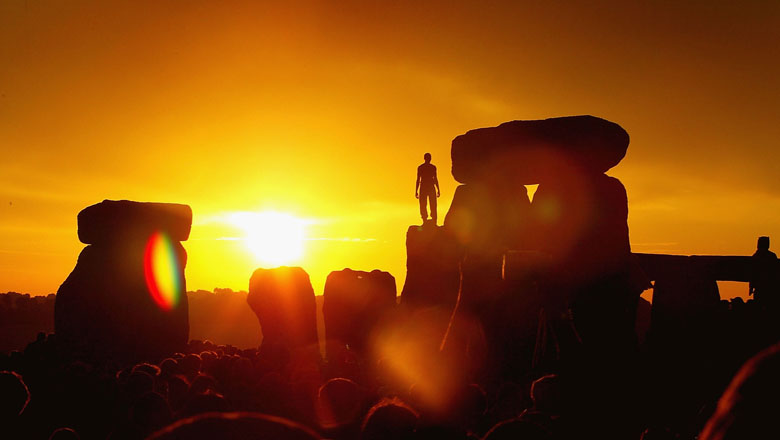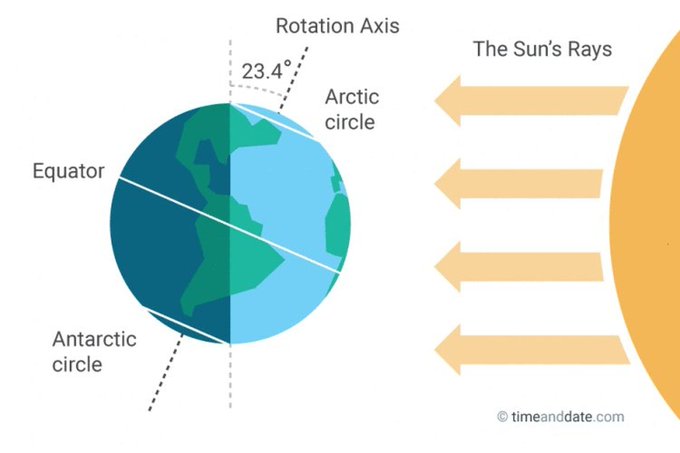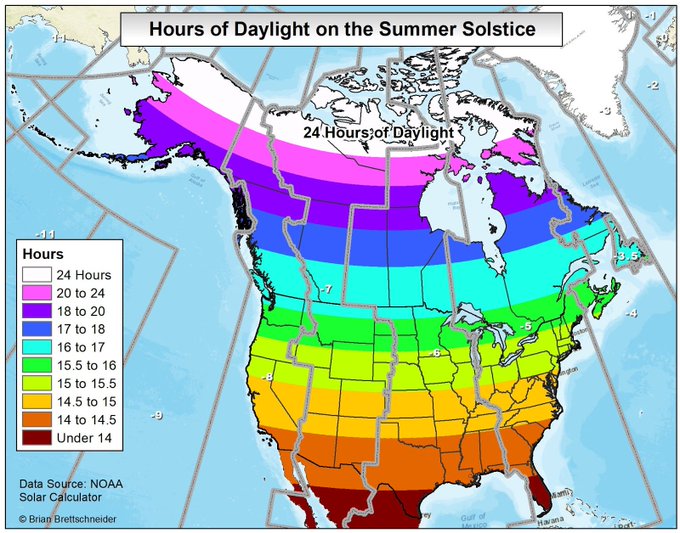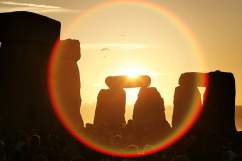UPDATE 6/21/17 @ 8:30 a.m. EDT: The summer solstice in the Northern Hemisphere was at 12:24 a.m. EDT this morning. Original story below. To learn more about the summer solstice, click here.

A reveller greets the sun as it rises above Stonehenge on the day of the Summer Solstice June 21, 2003 in Wiltshire, England. (Scott Barbour/Getty Images)
Happy first day of summer! June 21 is the longest day of the year, where people in the Northern Hemisphere can expect the maximum amount of daylight. Also known as the summer solstice, June 21 is the official start of the astrological summer for those in the Northern Hemisphere. On June 21 the sun will shine directly over the Tropic of Cancer while the North Pole reaches its maximum tilt towards the sun, making it the longest day of the year. The farther north a person goes, the more daylight they can expect to have. The North Pole will have 24-hours of daylight, known as “the midnight sun.”
The summer solstice lands on either June 20, 21, or 22 every year in the Northern Hemisphere. It is one of the four seasonal astronomical events that impacts earth. The other three are the fall or autumnal equinox, the winter solstice, and the summer or vernal equinox.
There are two solstices a year: the summer solstice and the winter solstice, which are not to be confused with “equinoxes.” Equinoxes occur in fall and spring and mean “equal night” in Latin, which means that both day and night get 12-hours. “Solstice” means “sun still” which means that depending on which direction the earth is tilted, it will receive more of either daylight or darkness. The summer solstice is known as the longest day of the year because the Northern Hemisphere is tilted towards the sun. While the Northern Hemisphere enjoys the extra sun, those living in the Southern Hemisphere will be experiencing the opposite: the Winter Solstice.
There’s also something called an “equilux,” which means “equal light” in Latin. The spring equilux occurs about four days before the spring equinox. The fall equilux occurs about four days after the autumnal equinox. During an equilux, days have an even split of daylight and darkness.
What time does the summer solstice start?
The summer solstice begins on Tuesday, June 20 and Wednesday, June 21 (depending on your time zone.) For time zones further west, the solstice falls on Tuesday. The solstice will begin June 21 at 12:24 a.m. EDT and will continue west to Tuesday, June 20, 11:24 p.m. CDT, 10:24 p.m. MDT, and 9:24 p.m. PDT.
During these times, the earth’s maximum axial will tilt towards the sun is 23.44˚. According to Time and Date, “In terms of daylight, this day is 5 hours, 50 minutes longer than on the December Solstice.” The Washington Post writes that American cities can expect anywhere between 22 to 13 hours of daylight, depending on their latitude. The average duration of daylight is 12 hours/day, but this highly variable depending on geographic location.
Solstices occur in the summer and winter. The winter solstice comes a few days before Christmas on December 20 or 21.
For inhabitants of the Northern Hemisphere, the winter solstice process becomes most noticeable around December 1 when the sun appears to “move” south and get smaller. By the day of the actual winter solstice, the sun has reached its lowest point in the sky at -25.5°. Once it has reached this lowest point, an interesting thing happens: the sun appears to stop moving south for three days. After this, the sun moves 1° north, announcing the coming of spring. It will continue to move northward until the summer solstice when it reaches its highest point.
As for the summer solstice, it’s been warm for some time now despite summer not beginning until tomorrow (or today.) That’s because today is the start of the astrological summer, not the meteorological summer. The meteorological summer started on June 1 and runs until August 31. The meteorological seasons consist of splitting the seasons into four periods made up of three months each consistent with the Gregorian, or Christian, calendar.
The meteorological seasons are defined as spring (March, April, May), summer (June, July, August), autumn (September, October, November) and winter (December, January, February.)
Meteorological seasons are different than astrological seasons. According to the National Centers for Environmental Information, “it is because the astronomical seasons are based on the position of the Earth in relation to the sun, whereas the meteorological seasons are based on the annual temperature cycle.”
Happy first day of summer!



